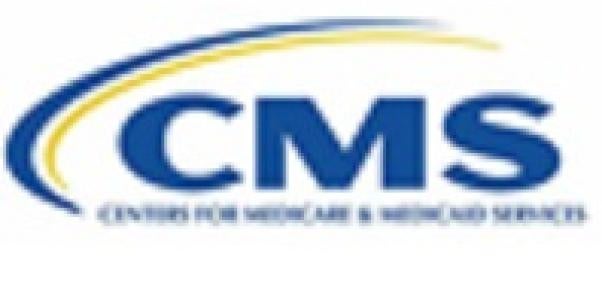The Centers for Medicare and Medicaid Services (CMS) recently released several significant Medicare Advantage (MA) and Part D guidance documents outlining new Center for Medicare and Medicaid Innovation (CMMI) programs and proposed MA and Part D program changes. These new participation options and proposals, summarized in greater detail here, would give MA and Part D plans greater flexibility to customize and tailor their benefit packages to differentiate their products from competitors.
IN DEPTH
The Centers for Medicare and Medicaid Services (CMS) recently released several significant Medicare Advantage (MA) and Part D guidance documents outlining new Center for Medicare and Medicaid Innovation (CMMI) programs and proposed MA and Part D program changes. A consistent theme throughout the new guidance is the agency’s emphasis on expanding flexibility and encouraging innovation in the MA and Part D programs. These new participation options and proposals would give MA and Part D plans greater flexibility to customize and tailor their benefit packages to differentiate their products from competitors, for example.
CMS proposed these policy changes in the following guidance documents:
- Part I of the CY 2020 Advance Notice, released on December 20, 2018
- Part II of the CY 2020 Advance Notice and Draft Call Letter (Draft CY 2020 Call Letter), released on January 30, 2019
- An application and fact sheet for a new payment model for Medicare Part D, released on January 18, 2019
- Proposed updates to the existing MA Value-Based Insurance Design (VBID) model, released on January 18, 2019
Read on for a summary of the agency’s new programs and proposals.
Supplemental Benefits for Chronically Ill Enrollees
The Bipartisan Budget Act of 2018 amended the Social Security Act to allow MA plans to offer chronically ill enrollees supplemental benefits that are not primarily health-related. The Draft CY 2020 Call Letter proposes criteria to govern which members CMS would consider “chronically ill” and therefore eligible for these benefits. Specifically, this guidance clarifies the first of three statutory criteria, which requires members to have one or more comorbid and medically complex chronic conditions that are life threatening or that significantly limit the overall health or function of the enrollee. The member must also have a high risk of hospitalization or other adverse health outcomes and require intensive care coordination to satisfy the remaining statutory criteria for the supplemental benefits.
With respect to the first statutory criterion, CMS proposes to consider members “chronically ill” if they have one or more of the 15 conditions listed in existing CMS guidance applicable to Special Needs Plans. This list was developed in 2008 and has not been updated since. In connection with this list of 15 conditions, CMS states that in future years it will convene a technical advisory panel to provide periodic updates, and requests comments as to whether MA plans should have flexibility to go beyond this list and make these eligibility determinations themselves.
Regardless of whether CMS finalizes the use of a defined list to satisfy the first criterion, the agency expects MA plans to develop and document their own processes to identify which members are chronically ill and thus eligible for the expanded supplemental benefits. Further, CMS reiterates that a member request for a supplemental benefit will be treated similarly to requests for other benefits; therefore, a request for a supplemental benefit may be considered a request for an organization determination and, as a result, a challenge to such a determination will be processed as an appeal.
Another factor that may add complexity to member appeals is the ability of MA plans to vary benefits for different members within chronic condition groups. The MA uniformity rules are waived for these supplemental benefits, so MA plans may offer the benefits to individual members based on whether they are likely to benefit from the service or intervention, instead of offering the same benefits to all members with a particular chronic condition. This is a key distinction from the targeted supplemental benefits that MA plans have been able to offer since the beginning of 2019, which can be targeted at members based on condition but cannot be further targeted based on other factors. CMS has also requested comments on whether MA plans should be able to condition the receipt of supplemental benefits on financial need.
New CMMI Model for Part D and Updates to MA VBID Model
On January 18, 2019, the CMMI announced a new payment model for Medicare Part D—the Part D Payment Modernization model—as well as updates to the existing MA VBID model. Both of these models are voluntary and will run from contract years 2020 through 2024.
Part D Payment Modernization Model
The new Part D Model will allow for (1) enhanced risk sharing between Part D plans and CMS, and (2) the creation of new flexibilities and incentives for plans, providers and beneficiaries to choose lower cost drugs. Both standalone Part D plans and MA-Part D (MA-PD) plans may participate in the new model.
Plans that participate in the Part D Model will assume greater risk in the catastrophic phase of Part D than traditional Part D plans. CMS will calculate the shared savings or losses owed to or by the plan for a given contract year by retrospectively establishing a spending target benchmark. CMS will set the benchmark at the amount of the federal reinsurance subsidy (80 percent of the Part D catastrophic phase costs after rebate) that CMS projects Part D plans would receive if they were not participating in the model. Plans with federal reinsurance subsidy spending that is lower than the benchmark will receive performance-based payments that are based on the total amount of savings; plans with federal reinsurance spending that is higher than the benchmark will owe 10 percent of the difference back to CMS. CMS will calculate savings or losses at the parent organization level.
CMS also plans to roll out tools for beneficiary use, including a Part D Rewards and Incentives program, that will help beneficiaries understand their options (for example, generic versus brand name options that are clinically equivalent) and out-of-pocket costs, and help them become more active and engaged consumers. In addition, plans will be able to propose drug utilization management techniques to encourage the use of lower priced drugs without impeding beneficiaries’ access to medically necessary drugs.
MA VBID Model
CMS announced the national expansion of the MA VBID model, which first launched in 2017 in a limited number of states. Similar to the proposals regarding supplemental benefits for chronically ill beneficiaries described above, participating VBID MA plans enjoy additional flexibility with respect to benefits, such as reduced cost sharing or additional benefits for beneficiaries with particular health conditions. Beginning in 2020, the VBID model will be available to MA plans in all 50 states and territories, as well as to Regional Preferred Provider Organizations, Chronic Condition special needs plans (SNPs), Dual-Eligible SNPs and Institutional SNPs. For MA plans that apply and are approved by CMS, the 2020 VBID model will further enhance flexibility in several ways:
- Participating MA plans may provide reduced cost-sharing or additional supplemental benefits for items or services that are “non-primarily health related,” such as transportation. Plans may target such benefits to particular beneficiaries based on chronic condition, socioeconomic status or both. Socioeconomic status will be measured by either eligibility for the low-income subsidy or dual eligibility for Medicare and Medicaid.
- Participating MA plans may offer increased rewards and incentives for beneficiaries who participate in programs designed to promote improved health and prevention and improve efficiency in the use of health care resources. MA plans may propose programs “with allowed values that more closely reflect the expected benefit of the health related service or activity, up to an annual limit.” MA-PD plans will also be able to offer additional rewards and incentives to enrollees who take Part D covered drugs and proactively participate in their care, such as through medication therapy management programs or receipt of preventive health services.
- In addition to new flexibility to offer telehealth benefits as part of the basic benefit package beginning in 2020, MA plans participating in the VBID model will be able to use telehealth to meet network adequacy requirements, subject to approval by CMS, as long as access to in-person visits remains available. CMS intends to explore how telehealth can “complement and augment” current provider networks, and how telehealth can expand access to care in underserved and rural areas.
- Beginning in 2021, the VBID model will also test the administration of the Medicare hospice benefit through certain MA plans. By statute, hospice benefits are provided through Medicare fee-for-service and are not part of the MA benefit package. MedPAC and other organizations have long called for a reversal of this hospice “carve out” from the MA program. CMS appears to be utilizing its demonstration authority to test and gather data on how this policy proposal would work in practice.
MA plans that apply to CMS by March 1, 2019, may seek to participate in one or more of the interventions described above. All MA plans that choose to participate in any of these interventions will also be required to offer wellness and health care planning.
Part D Mail Order Auto-Ship
The Draft CY 2020 Call Letter would allow mail order pharmacies to auto-ship refills to members. Since the 2014 contract year, CMS has required Part D plan sponsors (other than non-employer group waiver plans (EGWPs)) to obtain member consent prior to shipping each refill prescription. CMS proposes that, for the 2020 contract year, Part D plan sponsors would be permitted to auto-ship refills of drugs that a member has been on for at least four consecutive months. The Draft CY 2020 Call Letter outlines CMS’s expectations regarding any auto-ship program, including the following:
- Members would need to confirm their enrollment in the auto-ship program at least annually.
- Plan sponsors would be required to send two reminders to the beneficiary well in advance of shipment (e.g., 25 and 10 days prior). The reminders could be by phone, email, text, direct mailing or other comparable means based on the beneficiary’s preference.
- Members would be permitted to choose to participate for none, all or a subset of their medications.
- Plan sponsors would be required to refund any refills that the beneficiary reports as unneeded or unwanted.
The proposed change in policy follows CMS’s requests for comments in the Draft CY 2019 Call Letter on the current auto-ship restrictions that were adopted in 2014. Since the 2014 policy was initially announced, CMS has created a limited exception for auto-ship of initial fills for all Part D plans and a broad exception for EGWPs permitting auto-ship of initial fills and refills. The requirements CMS has proposed for auto-shipping are similar but not identical to the current exceptions to the auto-ship prohibition. For example, CMS does not currently limit auto-ship of refills by EGWP sponsors to drugs that a beneficiary has taken for four months, and does not currently require two reminders in advance of each refill.
EGWP Buy-Down of Part B Premiums
CMS proposes permitting EGWPs to use a designated portion of their capitated payments to buy down the Part B premium, as individual market MA plans have been able to do. CMS formerly prohibited the practice for EGWPs both because of certain CMS operational limitations and because EGWPs could not distinguish the respective portions of their payments for basic benefits versus rebates. However, CMS was convinced to propose changing this policy after receiving feedback from stakeholders that the policy “hinders [EGWPs’] ability to function in the market and unnecessarily restricts their benefit offering beyond what was intended in its implementation.” If the proposal is finalized, EGWPs that choose to take advantage of this option will be required to comply with uniformity of benefit rules and apply the buy-down consistently to every enrollee in a particular plan. EGWPs will also be subject to the same buy-down maximum as individual market MA plans.
Risk-Based Contracting for Pharmacy Benefits
CMS requests comments on “the barriers, feasibility, and benefits/drawbacks” of including the cost of Part B and D drugs in MA plans’ risk arrangements with non-pharmacy providers (e.g., physician groups or accountable care organizations) in a request for information set out in the Draft CY 2020 Call Letter. CMS appears to be interested in facilitating the inclusion of these Part B and Part D prescription drug costs in provider risk arrangements based, at least in part, on the statutory prohibition on Part D plan sponsors requiring pharmacies to take on insurance risk. By giving non-pharmacy providers a financial incentive to manage prescription drug costs, including physician-administered drugs, CMS hopes that MA plans and Part D plan sponsors will be able to “drive down the cost” of such drugs.
Updates to MA Risk Adjustment
Payment Condition Count Model
CMS has proposed to move forward in 2020 with the Payment Condition Count model it initially proposed in the CY 2019 Advance Notice Part I. This model includes a coefficient for a variable that counts the number of conditions that a beneficiary has, which stems from the 21st Century Cures Act mandate to “take into account the total number of diseases or conditions of an individual enrolled in an MA plan.” Under the proposed model, each condition will have two impacts on the beneficiary’s risk score. First, it will affect the coefficient for the specific condition. Second, it will affect the coefficient for a variable that counts the number of conditions the beneficiary has.
MA plans must consider the important implications of this new model. First, the model increases the additional value of each diagnosis identified and submitted—and increases the consequences of omitting a diagnosis—because each diagnosis is factored in the model twice. Second, it may make it harder to predict risk scores and make the bidding process more complicated. As CMS noted, the “incremental predicted expenditure for a given HCC [Hierarchical Condition Category] is dependent on the number of conditions the beneficiary may have, regardless of what those conditions may be.”
CMS asserts that it does not have a choice in whether to implement a revised model. The Social Security Act requires that the revised model be phased in over three years, with full implementation by 2022. CMS proposes to calculate risk scores used in payment year 2020 by blending (at 50/50) the risk score calculated with the new model and the risk score calculated with the 2017 CMS-HCC model.
Encounter Data
CMS proposes to increase the weighting of encounter data from 25 percent to 50 percent. The transition from Risk Adjustment Processing System (RAPS) data to encounter data began in 2016 and was initially scheduled to be complete in 2020. CMS has delayed the transition amidst concerns in the industry and from the US Government Accountability Office regarding the accuracy and reliability of encounter data. As proposed, the encounter data score would use diagnoses from encounter data and fee-for-service claims, would continue to be supplemented with RAPS inpatient records, and would be calculated using the new Payment Condition Count model. The RAPS score would use diagnoses from RAPS and fee-for-service claims and would be calculated using the 2017 CMS-HCC model.
Star Ratings Measures Appeals Auto-Forward (Part D) and Appeals Upheld (Part D)
CMS proposes to remove the two Part D appeals measures from the Star Ratings beginning with the 2020 measurement year (which will affect the CY 2022 Star Ratings). These measures evaluate the timeliness of processing coverage determinations and redeterminations and the rates at which appeals are upheld. However, CMS has expressed concerns that the measures are not statistically reliable because, among other issues, they rely on Part D plans to identify untimely cases and send them to an Independent Review Entity. CMS requests comments on whether the two Part D measures should remain on the Display Page. CMS also reminds Part D plans that Part D appeals will continue to be monitored through program audits, annual reporting requirements and other monitoring activities, and that the agency will continue to take action to address noncompliance.
Provider Directory Accuracy
Like the annual Call Letters for the past several years, the Draft CY 2020 Call Letter includes a discussion of provider directory accuracy audits. In prior years, CMS emphasized the consistently high rates of provider directory inaccuracies and warned that the agency may take enforcement action for the most egregious instances of noncompliance. CMS recently concluded the third round of provider directory audits and, in keeping with its Call Letter warnings, the audits resulted in a combined 18 Notices of Non-Compliance, 15 Warning Letters and 7 Warning Letters with a Request for a Business Plan. In the current Draft CY 2020 Call Letter, CMS does not warn MA organizations about potential compliance actions, and the overall tone seems to signal that the agency may take a more collaborative approach to working with plans to address what the agency acknowledges is a “complex problem.”
Part D Risk Corridors
Although CMS has the authority to widen risk corridor thresholds, after evaluating risk sharing amounts for 2008–2017 and finding that they have varied significantly from year to year and between Part D sponsors, CMS proposes leaving the risk corridor parameters unchanged for 2020.
Addressing the Opioid Crisis
Addressing the opioid crisis remains a priority for the US Department of Health and Human Services. The Draft CY 2020 Call Letter contains several policies that continue to address this problem. For example, CMS is encouraging plans to reduce beneficiary cost-sharing for naloxone to treat overdose, and reminds MA organizations that medically approved non-opioid pain management can be offered as a supplemental benefit. CMS also proposes to advance opioid-related measures through the Star Ratings process.
This article was co-authored by Mara McDermott, Vice President at McDermott+Consulting.






 i
i

